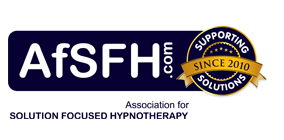You may have noticed that among all the promotional or celebratory ‘days’ across the year there are quite a few devoted to sleep – World Sleep Day, Public Sleeping Day, Sleepover Day, and a whole Sleep Awareness Week to name a few – it’s obviously something we feel strongly about marking!
As a species, humans are the only one that will deliberately deprive themselves of sleep.
Other animals have their sleep patterns enshrined as a matter of life and death and we……don’t.
We may have the same biological sleep/wake control programmes, but we have learned how to override them, which is possibly one reason why we humans suffer so much more with stress or sleep issues, while my cat and my dog, for example, are super relaxed!
Famous non-sleepers
In fact, we humans actively celebrate not sleeping much, don’t we?
Ex-Prime Minister Margaret Thatcher is known as much for her famed ability to sleep for only 4 hours a night as she is for her political work, and Winston Churchill is also known for having regularly worked throughout the night instead of sleeping.
The Japanese are widely regarded as the most industrious country, and perhaps not coincidentally, they also hold the world record for sleeping less as a nation than any other.
Actors Dwayne ‘The Rock’ Johnson and Mark Wahlberg promote getting up ridiculously early and boast that they need less sleep, as does country legend Dolly Parton.
Ex-president Donald Trump attributes his business success to his habit of only sleeping 3- 4 hours a night in order to ‘stay ahead of his competition’.
Former CEO of Twitter, Jack Dorsey also says he regularly operated on four hours of sleep, and designer Tom Ford says his success is down to ‘energy’, not talent, and that it is fuelled by sleeping just three hours a night.
Clearly none of these people are following the same sleep average schedule as the majority of the world; but how do they manage on so little sleep at night?
Maybe, they nap..…
Naps - a cultural norm
A ‘nap’ is defined as a period of light sleep or a brief sleep taken during the day when we would otherwise be awake. While sleeping heavily when we should be working is frowned upon, and seen as ‘lazy’, taking a nap during the day is increasingly seen as a proactive thing to do, especially when it has become re-branded in recent times as a ‘power nap’!
Since the economic boom of the 1980s, the Japanese have had the concept of ‘inemuri’ – which literally means ‘sleeping while present’ – a culturally accepted nap that can be taken as part of the workday, often at their desk, or on public transport, while remaining ready to go back to work immediately upon waking. Far from being criticised, it is seen as a sign of hard work and dedication to one’s job, whether you are an executive, a ‘blue collar worker’ or a student.
The Mediterranean habit of taking a ‘siesta’ – a longer nap, usually after lunch, in the heat of the day – has been part of their culture for much longer, perhaps thousands of years, and is thought to have arisen as a way to cope with the demands of farming in the summer heat. It is now seen as a cultural staple, allowing people a two-hour break from work, building in time to connect with family over a long lunch as well as take a nap.
Nap pros and cons
A carefully timed nap can come with numerous health benefits, or it can clash heavily with effective sleep.
It can help you learn and remember or it can affect your work productivity.
It can leave you feeling refreshed and relaxed or it can leave you feeling groggy and disoriented.
It can support your sleep optimisation and help overcome jet lag or it can leave you tossing and turning restlessly at night!
If you’re looking to make the most of siestas or even ‘inemuri’ and want to learn to nap efficiently, how do you do it? And can it help you function better?
All in the timing
Firstly, by definition, a nap needs to be brief – less than a full 90-minute sleep cycle, or we run the risk of tipping into deeper, even full-on sleep which can damage our ability to sleep later, and cause us to wake up from a nap feeling groggy and even more tired.
So, it is best to keep naps to around 30 minutes maximum – set a timer if necessary.
One famous sleep researcher naps with his car keys in his hand, above a metal tray, so that as his nap progresses and he’s heading close to sleep, relaxing a little too far….he lets go of his keys and wakes up as they clatter onto the tray!
Keys and tray or asking Siri, whichever you choose, having set an alarm stops you going too far into sleep and risking having to drag yourself out of a deeper stage of sleep than you intended.
Reasons to be napping
Secondly, think about why you’re napping.
If it’s because you slept badly and are desperately tired, think twice about napping at all, because it may actually stop you sleeping better that night.
Because we work hard during the day, in mind and body, we build up something known as ‘sleep pressure’ – an accumulation of chemicals that act as a kind of sand timer, increasing our sleepiness the longer we have been awake. A nap partially resets that sand timer and may then mean that you aren’t as sleepy when it comes to bedtime – so, if you’re prone to insomnia, it’s better to avoid daytime naps.
If, however, you usually sleep well at night, and just feel a bit tired after a hard gym session, or learning and studying bout, then a brief nap can push back that sleepiness to the appropriate time for you to go to bed as usual.
Jet lag bonus
This ability to partially reset our sleepiness can be especially helpful when we are struggling with jet lag after crossing time zones, whether for work or holidays. While we don’t want to give in to the temptation of full-on sleep at what feels like our home body clock time, having a brief nap can push back that desire to sleep until the actual clock in your new destination says it’s acceptably time for bed!
Napping for learning
Taking a brief nap after a session of studying and learning helps your brain to ‘fix’ information into place. So, whether you're learning a language, studying for exams, or physically working on a skill such as dance or sport, a well-timed nap helps your brain to consolidate that learning, strengthening the neural circuits that operate it.
Magic nap
We know that when babies and young children are overtired and grumpy, they can be magically restored by taking a nap!
The same is true for us as adults – taking a restorative nap, even as short as 10 minutes, can improve mood, and help stabilise emotions.
(These are the kind of brief naps it is possible to fit in in quite public places, as promoted by the ‘Public Sleeping Day' – they suggest ignoring passers by and getting your head down in a park, on a bus or train, in a coffee shop, or even at your desk!)
Napping for creativity
Even brief naps can be effectively used to enhance creativity. They do this because they promote the activation of different circuits within your brain that we find it hard to run when we are fully awake and focused on tasks.
This ‘default mode network’ – literally your brain’s default setting when it has nothing else to do – can switch ON as you switch OFF from focused thought, allowing your brain to make connections between facts, information, and experiences in order to come up with novel ways to think about a task.
Deliberately taking time to have a nap after working on a challenging task can allow you to come up with solutions or alternatives to a problem.
In fact, you don’t even need be fully asleep – a state known as ‘non-sleep deep rest’, the same kind of brain state I use in hypnotherapy sessions with my clients that we call hypnosis, or ‘trance’, has been shown to result in more creative thinking and enhanced problem solving.
Try it next time you get stuck on working on something!!
Whether you embrace the art of inemuri at your desk, choose a quick power nap to boost your creativity, upgrade your study results with a brief nap, or strategically manage your body clock across time zones, choosing to nap may well be the answer!
If you find it harder to switch off completely but recognise that some non-sleep deep rest would be beneficial, then why not try downloading my own ‘relaxation audio’? It’s been designed to promote calm brain states and allow for mind and body relaxation and you can find it here: https://inspiredtochange.biz/contact/contact-maidstone-east/
Claire Noyelle
https://www.afsfh.com/hypnotherapists-postcodes/216-claire-noyelle/

